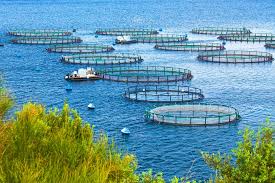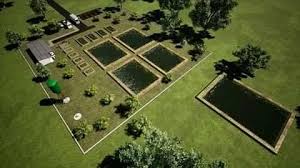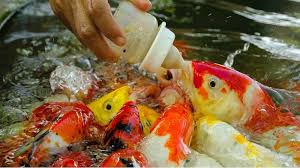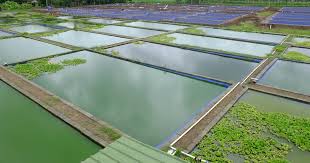Aquaculture farming refers to the cultivation of aquatic animals and plants in controlled environments. This practice includes various species, such as fish, shellfish, and seaweed.
Aquaculture plays a vital role in global food production and offers a sustainable alternative to wild fishing.
This article provides a detailed overview of aquaculture, including its benefits, types of systems, key organisms, site selection, and water quality management.
Aquaculture has ancient roots, dating back thousands of years. Today, it has evolved into a modern industry that employs advanced techniques for breeding, feeding, and harvesting aquatic organisms.
As the global population grows, so does the demand for seafood. Aquaculture provides an efficient way to produce fish and other seafood, helping to ensure food security.
The aquaculture industry significantly contributes to local and global economies by creating jobs, supporting local communities, and providing affordable food options.
Benefits of Aquaculture Farming
Aquaculture offers several advantages that contribute to its growing popularity.
1. Sustainable Food Source: Aquaculture can reduce pressure on overfished wild populations by providing a consistent supply of seafood. This helps maintain biodiversity and ecosystem health.
2. Economic Growth: The industry creates jobs in farming, processing, and distribution. It can stimulate local economies, especially in coastal and rural areas.
3. Efficient Production: Aquaculture can produce protein more efficiently than traditional livestock farming. Fish convert feed into protein more effectively than land animals, leading to higher yields.
4. Reduced Carbon Footprint: Aquaculture often requires less land and freshwater compared to terrestrial farming, contributing to a lower environmental impact and carbon footprint.
5. Nutritional Benefits: Fish and other seafood are rich in essential nutrients, such as omega-3 fatty acids, vitamins, and minerals. Aquaculture helps provide these important nutrients to populations worldwide.
Types of Aquaculture Systems

There are various types of aquaculture systems, each with unique characteristics and requirements.
1. Mariculture: This involves the cultivation of marine organisms in their natural habitats, such as oceans and coastal areas. Common species include oysters, clams, and seaweed.
2. Freshwater Aquaculture: This system focuses on farming fish and other organisms in freshwater environments like rivers, lakes, and ponds. Common species include catfish, tilapia, and trout.
3. Recirculating Aquaculture Systems (RAS): RAS uses advanced technology to filter and recycle water in a controlled environment. This method allows for year-round production and reduces water usage.
4. Integrated Multi-Trophic Aquaculture (IMTA): IMTA combines different species in one system, such as fish, shellfish, and seaweed, creating a balanced ecosystem where waste from one species serves as food for another.
5. Aquaponics: This system integrates aquaculture with hydroponics, allowing fish waste to provide nutrients for plants. It creates a sustainable, closed-loop system that maximizes resource efficiency.
Key Aquatic Organisms in Aquaculture
Several species are commonly cultivated in aquaculture due to their popularity and market demand.
1. Fish: Fish are the most widely farmed aquatic organisms. Popular species include salmon, tilapia, catfish, and trout.
2. Shellfish: Shellfish, such as shrimp, oysters, and clams, are also significant in aquaculture. They are often cultivated in coastal areas and are highly valued for their taste and nutritional benefits.
3. Seaweed: Seaweed farming is gaining popularity due to its environmental benefits and nutritional value. It is used in food products, cosmetics, and pharmaceuticals.
4. Crustaceans: Crustaceans like lobsters and crabs are farmed for their high market value. They require specific conditions and management practices to thrive.
5. Aquatic Plants: Some aquaculture systems cultivate aquatic plants, which can be harvested for food or as natural filters to improve water quality.
Read Also: Recommended Number of Ruminant Animals per Housing Unit for Fattening
Site Selection for Aquaculture Farming

Choosing the right site for aquaculture is crucial for successful farming. Several factors must be considered during the site selection process.
1. Water Source: The availability of clean, abundant water is essential for aquaculture. Potential sites should have access to a reliable freshwater or saltwater source.
2. Environmental Conditions: The site should have suitable environmental conditions, such as temperature, salinity, and oxygen levels, that meet the needs of the chosen species.
3. Soil Type: The soil in the area should be suitable for constructing ponds or tanks. Soil with good drainage and low permeability is preferred to prevent water loss.
4. Accessibility: The site should be easily accessible for transportation and logistics, ensuring that products can be efficiently delivered to markets.
5. Regulatory Compliance: Prospective aquaculture sites must comply with local regulations and zoning laws. It’s essential to obtain the necessary permits before starting operations.
Water Quality Management
Maintaining water quality is critical for the health and productivity of aquatic organisms. Effective water quality management practices include:
1. Regular Monitoring: Regularly testing water parameters, such as temperature, pH, dissolved oxygen, and ammonia levels, helps ensure optimal conditions for aquatic organisms.
2. Filtration Systems: Using filtration systems can help remove waste and debris from the water, maintaining a clean and healthy environment for the organisms.
3. Aeration: Aerating water can improve oxygen levels, which are essential for the health of fish and other aquatic organisms. Various aeration techniques can be employed, including paddlewheels and diffusers.
4. Nutrient Management: Managing nutrients in the water is crucial to prevent harmful algal blooms and maintain ecosystem balance. Implementing a proper feeding regimen helps control nutrient levels.
5. Biosecurity Measures: Implementing biosecurity measures, such as controlling access to the farm and using quarantine procedures, can prevent the introduction of diseases and pests that threaten aquatic organisms.
Feeding and Nutrition of Aquatic Organisms
Proper feeding and nutrition are crucial for the growth, health, and productivity of aquatic organisms.
1. Diet Formulation: The diet should be balanced and tailored to the specific needs of the species being cultivated. It typically includes proteins, carbohydrates, fats, vitamins, and minerals.
2. Types of Feed: Aquaculture feed can be categorized into:
i. Commercial Pellets: These are specially formulated feeds that provide essential nutrients.
ii. Natural Foods: Some species can be fed natural foods such as algae, zooplankton, and small invertebrates.
3. Feeding Strategies: Effective feeding strategies include:
i. Feeding Frequency: Young fish often require more frequent feedings, while adults may need less.
ii. Rationing: Providing the right amount of feed is essential to prevent overfeeding and maintain water quality.
4. Monitoring Growth: Regularly monitoring the growth rates and health of aquatic organisms helps adjust feeding practices to ensure optimal nutrition.
5. Nutritional Supplements: Adding supplements like vitamins and minerals can enhance the health and growth of aquatic organisms, especially in intensive systems.
Read Also: Gray Leaf Spot (Stemphylium spp) – Symptoms and Damage Control
Health Management in Aquaculture

Maintaining the health of aquatic organisms is vital for a successful aquaculture operation.
1. Regular Health Checks: Regular monitoring for signs of illness, such as unusual behavior or physical abnormalities, is essential for early detection of health issues.
2. Vaccination: Vaccines can be used to prevent certain diseases in fish. It’s important to follow vaccination protocols to protect the stock.
3. Quarantine Procedures: New stock should be quarantined before introducing them into the main system to prevent the spread of diseases.
4. Treatment of Diseases: If a disease outbreak occurs, timely treatment is crucial. This may involve medications, adjusting water quality, or altering feeding practices.
5. Biosecurity Measures: Implementing biosecurity measures, such as controlling access to the farm and ensuring clean equipment, helps prevent disease outbreaks.
Environmental Considerations in Aquaculture
Aquaculture has both positive and negative environmental impacts that need careful management.
1. Water Quality Management: Maintaining good water quality is essential for the health of aquatic organisms. Regular testing of water parameters helps ensure optimal conditions.
2. Waste Management: Effective waste management practices, such as using settling ponds or biofilters, can minimize the environmental impact of aquaculture.
3. Biodiversity Conservation: Integrating aquaculture with natural ecosystems can enhance biodiversity. For instance, using IMTA systems can create a balanced ecosystem.
4. Sustainable Practices: Adopting sustainable practices, such as using renewable energy sources and minimizing chemical inputs, can reduce the environmental footprint of aquaculture.
5. Regulatory Compliance: Ensuring compliance with local and national regulations regarding environmental protection is crucial for sustainable aquaculture practices.
Harvesting Techniques in Aquaculture
Harvesting is a critical stage in aquaculture, as it impacts the quality of the product and the overall efficiency of the operation.
1. Timing of Harvest: Knowing when to harvest is essential for ensuring the best quality of the aquatic organisms. Factors such as size, market demand, and growth rates should be considered.
2. Harvesting Methods: Common harvesting methods include:
i. Netting: Using nets to catch fish is a common method in aquaculture.
ii. Seining: This involves using a large net that encircles fish, allowing for a more efficient catch.
3. Handling Techniques: Proper handling during harvesting minimizes stress and injury to the fish.
4. Processing: Post-harvest processing may involve cleaning, filleting, and packaging to prepare the product for market.
5. Storage and Transportation: Ensuring proper storage conditions (e.g., temperature control) during transportation helps maintain product quality and safety.
Economic Aspects of Aquaculture Farming
Understanding the economic aspects of aquaculture is crucial for its sustainability and profitability.
1. Initial Investment: Starting an aquaculture business requires significant initial investment for equipment, site preparation, and stock purchase.
2. Operating Costs: Regular expenses include feed, labor, utilities, and maintenance. It’s important to manage these costs to ensure profitability.
3. Market Demand: Understanding market trends and consumer preferences is essential for maximizing sales. This may involve researching local markets and exploring export opportunities.
4. Profitability Analysis: Regularly conducting profitability analyses can help assess the financial health of the aquaculture operation and identify areas for improvement.
5. Government Support: Many governments offer support for aquaculture through grants, loans, and technical assistance. It’s beneficial to explore available resources.
Aquaculture is a vital industry that offers sustainable solutions to meet global seafood demand. By focusing on key aspects such as feeding and nutrition, health management, environmental considerations, harvesting techniques, and economic viability, aquaculture practitioners can develop successful and sustainable farming operations.
Aquaculture offers a sustainable and efficient way to meet the growing demand for seafood while providing economic benefits to communities.
By understanding the principles of aquaculture, including its benefits, types of systems, key organisms, site selection, and water quality management, individuals and businesses can successfully engage in this vital industry.
As aquaculture continues to evolve, embracing innovative practices will be crucial for addressing future challenges and ensuring a sustainable food supply for generations to come.
Do you have any questions, suggestions, or contributions? If so, please feel free to use the comment box below to share your thoughts. We also encourage you to kindly share this information with others who might benefit from it. Since we can’t reach everyone at once, we truly appreciate your help in spreading the word. Thank you so much for your support and for sharing!
Read Also: 4 Steps to help an Orange Tree Produce Sweet Oranges
Frequently Asked Questions
We will update this section soon.

